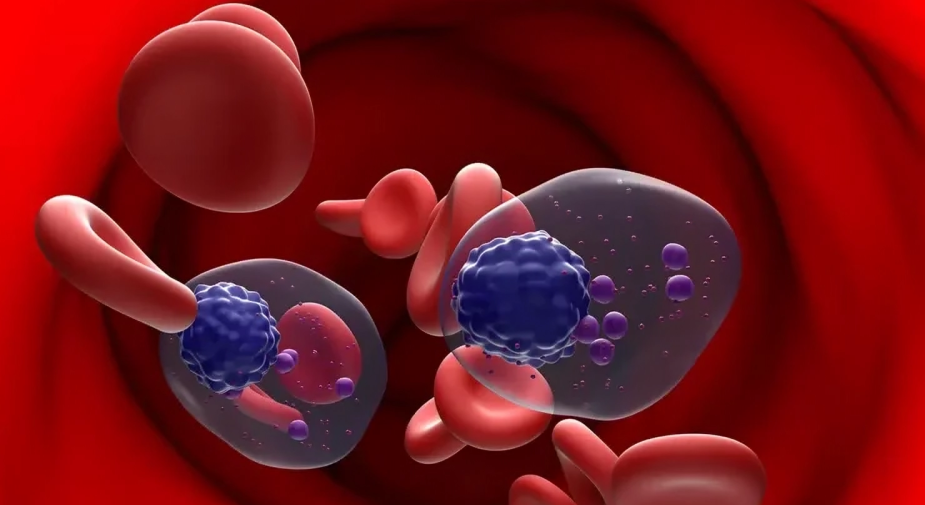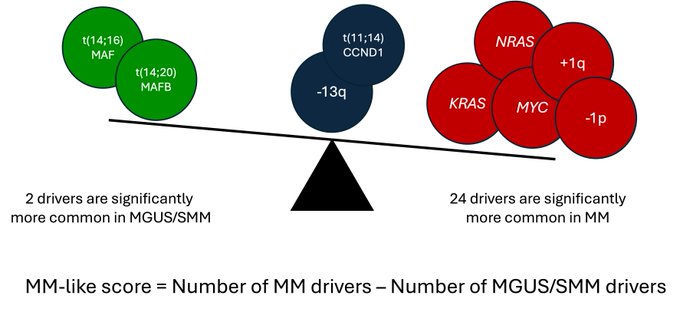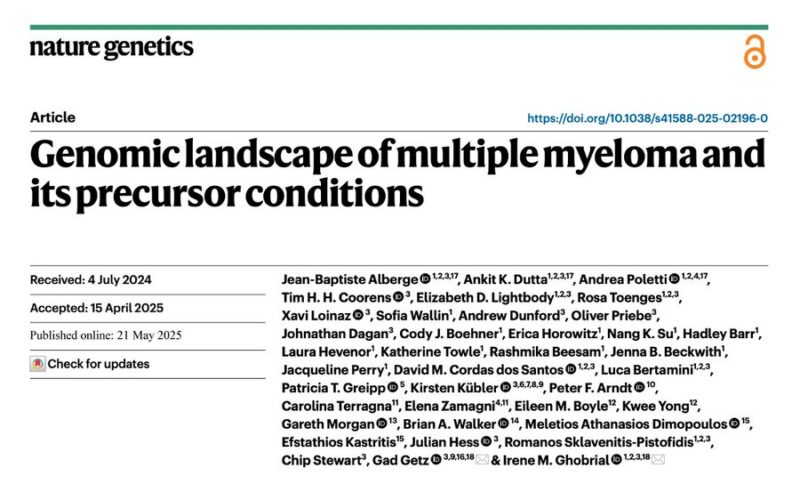
Jean-Baptiste Alberge: Genomic Landscape of Multiple Myeloma and Its Precursor Conditions
Jean-Baptiste Alberge, Instructor in Medicine at Dana-Farber Cancer Institute, posted on X:
“Check out our new study in Nature Genetics, which examines how precancerous conditions (MGUS/SMM) evolve into Multiple Myeloma, and offers new computational methods to predict progression risk and model cancer evolution.
Multiple Myeloma is preceded by precursor asymptomatic stages like MGUS and smoldering MM (SMM). But predicting who will progress remains a challenge. In our study, we analyzed > 1,000 genomes to map the evolution of precancers —both genetically and over time.
We identified >100 significant genetic drivers across cancer stages, including mutations in known MM players (FAM46C, DIS3, SP140), new candidates (IKZF3, IKBKB), non-coding elements (ILF2 promoter), and structural variants (TRAF3/AMN).
We introduce the “MM-like score”, a genomic risk score derived from WGS data. It reflects how far a patient’s tumor has progressed along the path to MM; a stepwise model of evolution we name “ladder-climbing.”

The MM-like score increases in patients who later progressed and was validated in 2 cohorts. Clinically, a higher score = higher risk of transformation. We also estimated the tumor’s age (how long ago it began) and found that tumors in stable patients are “younger”, while tumors in patients who later progressed are already ~30 years of age at diagnosis.
We characterized *where* and *when* mutational processes emerge (clock-like and AID, normal biology in early stages versus APOBEC & ROS, cancer-like stress in later stages), including in regulatory and structural variant regions.
Another key insight: The order of genetic events matters. Some events (e.g., MYC gains, del(12)) occur late and are stronger predictors of progression with our new implementation of the Bradley-Terry model “TiMMing”.
We also used for the first time another new computational method, “SVelfie”, to discover significant driver genes in structural variants.
Clinical relevance: The “MM-like score” could inform who needs closer monitoring or even early treatment. In our opinion, WGS (and WGS-based risk tools) are also ready to replace FISH and could be assessed repeatedly using liquid biopsies.
Final takeaways: Our study:
- Builds a genomic timeline of MM development.
- Provides a predictive MM-like score.
- Reveals new driver mutations (and new computational methods to discover them).
- Supports genomic characterization and risk stratification using WGS.”
Title: Genomic landscape of multiple myeloma and its precursor conditions
Authors: Jean-Baptiste Alberge, Ankit K. Dutta, Andrea Poletti, Tim H. H. Coorens, Elizabeth D. Lightbody, Rosa Toenges, Xavi Loinaz, Sofia Wallin, Andrew Dunford, Oliver Priebe, Johnathan Dagan, Cody J. Boehner, Erica Horowitz, Nang K. Su, Hadley Barr, Laura Hevenor, Katherine Towle, Rashmika Beesam, Jenna B. Beckwith, Jacqueline Perry, David M. Cordas dos Santos, Luca Bertamini, Patricia T. Greipp, Kirsten Kübler, Irene M. Ghobrial
Read The Full Article at Nature Genetics.

More posts featuring Multiple Myeloma.
-
Challenging the Status Quo in Colorectal Cancer 2024
December 6-8, 2024
-
ESMO 2024 Congress
September 13-17, 2024
-
ASCO Annual Meeting
May 30 - June 4, 2024
-
Yvonne Award 2024
May 31, 2024
-
OncoThon 2024, Online
Feb. 15, 2024
-
Global Summit on War & Cancer 2023, Online
Dec. 14-16, 2023
